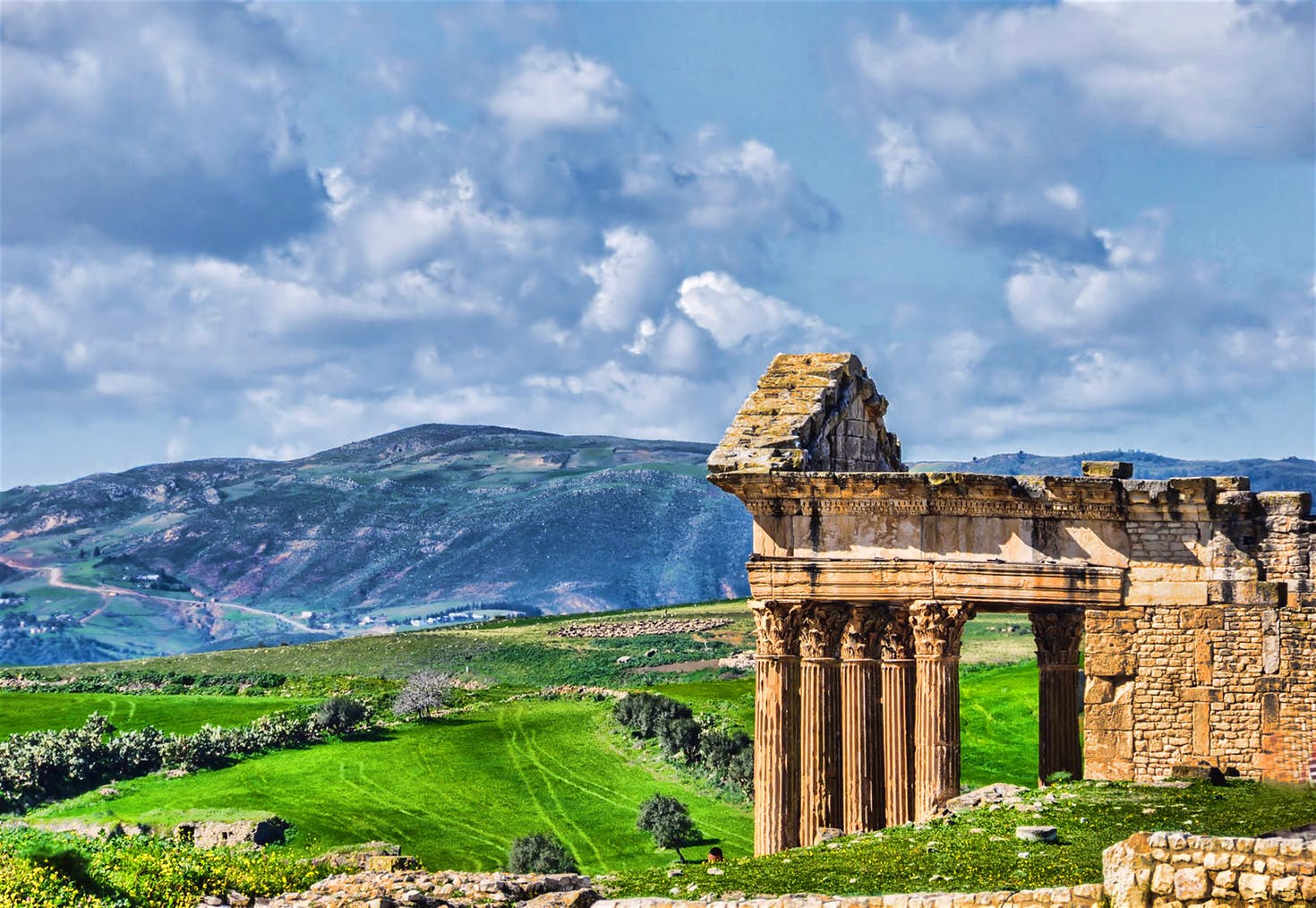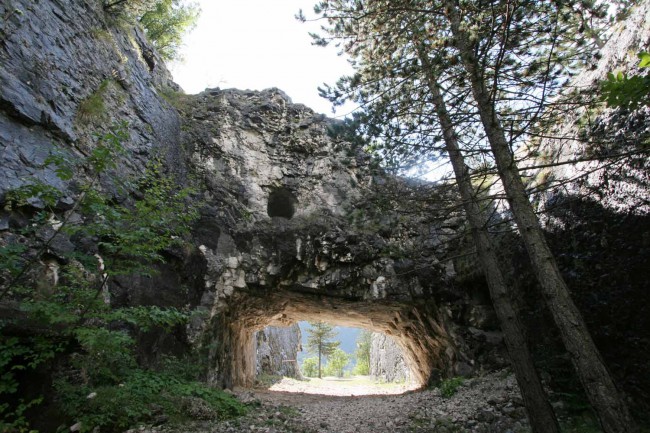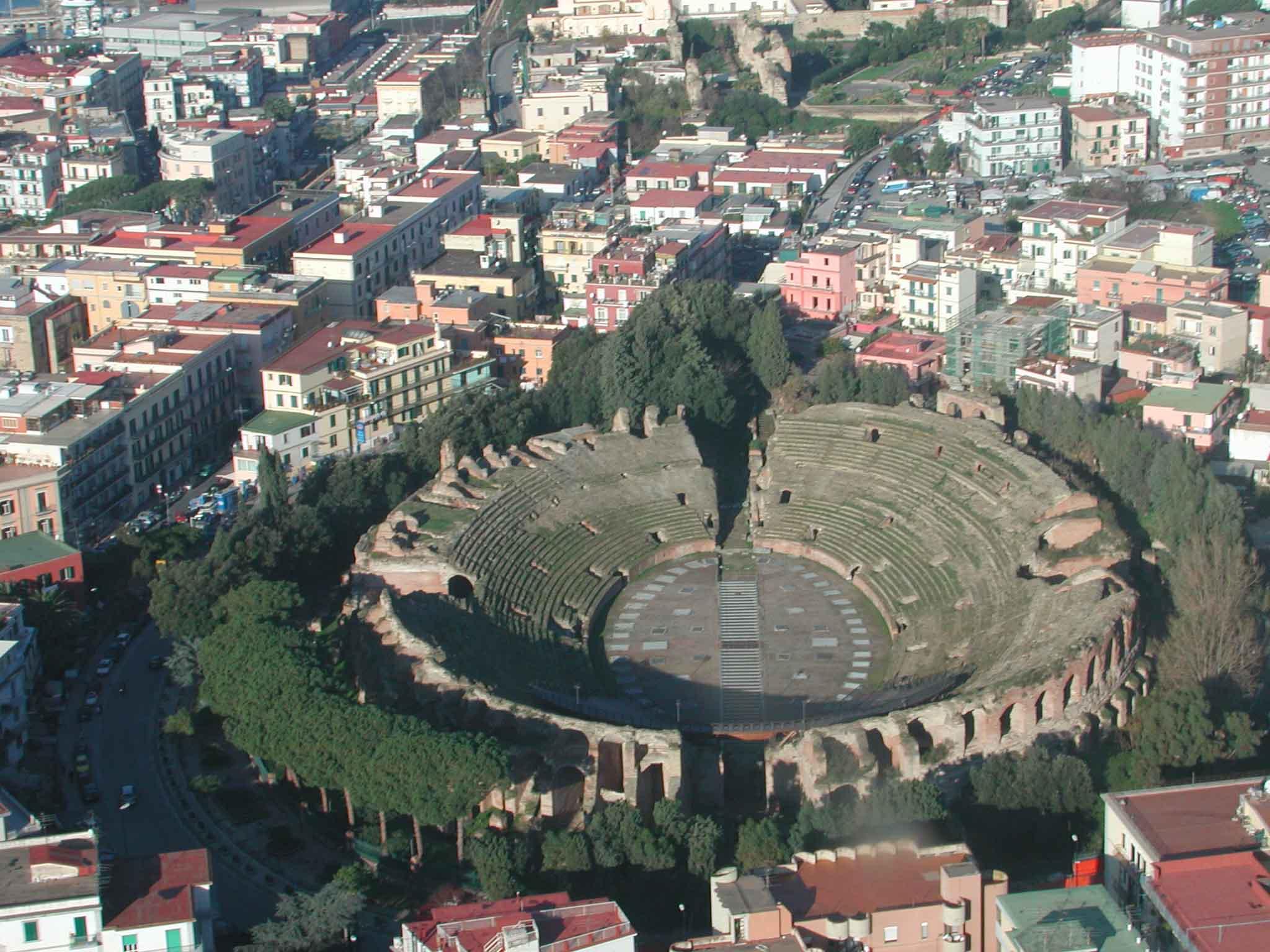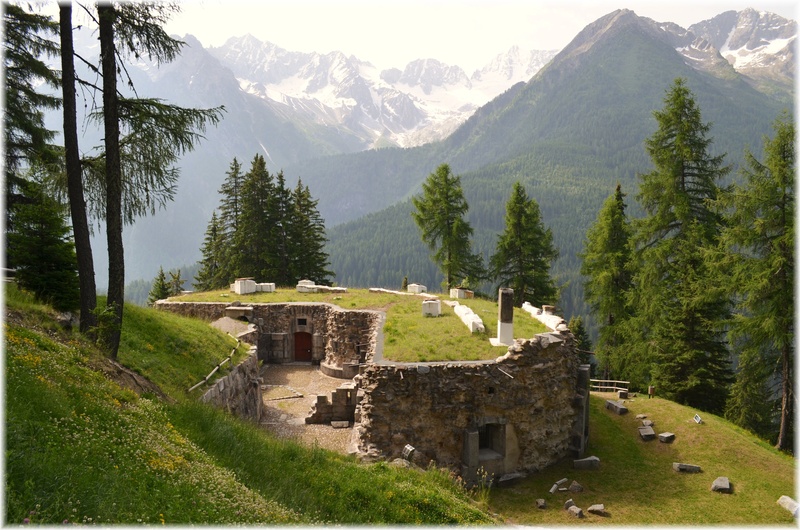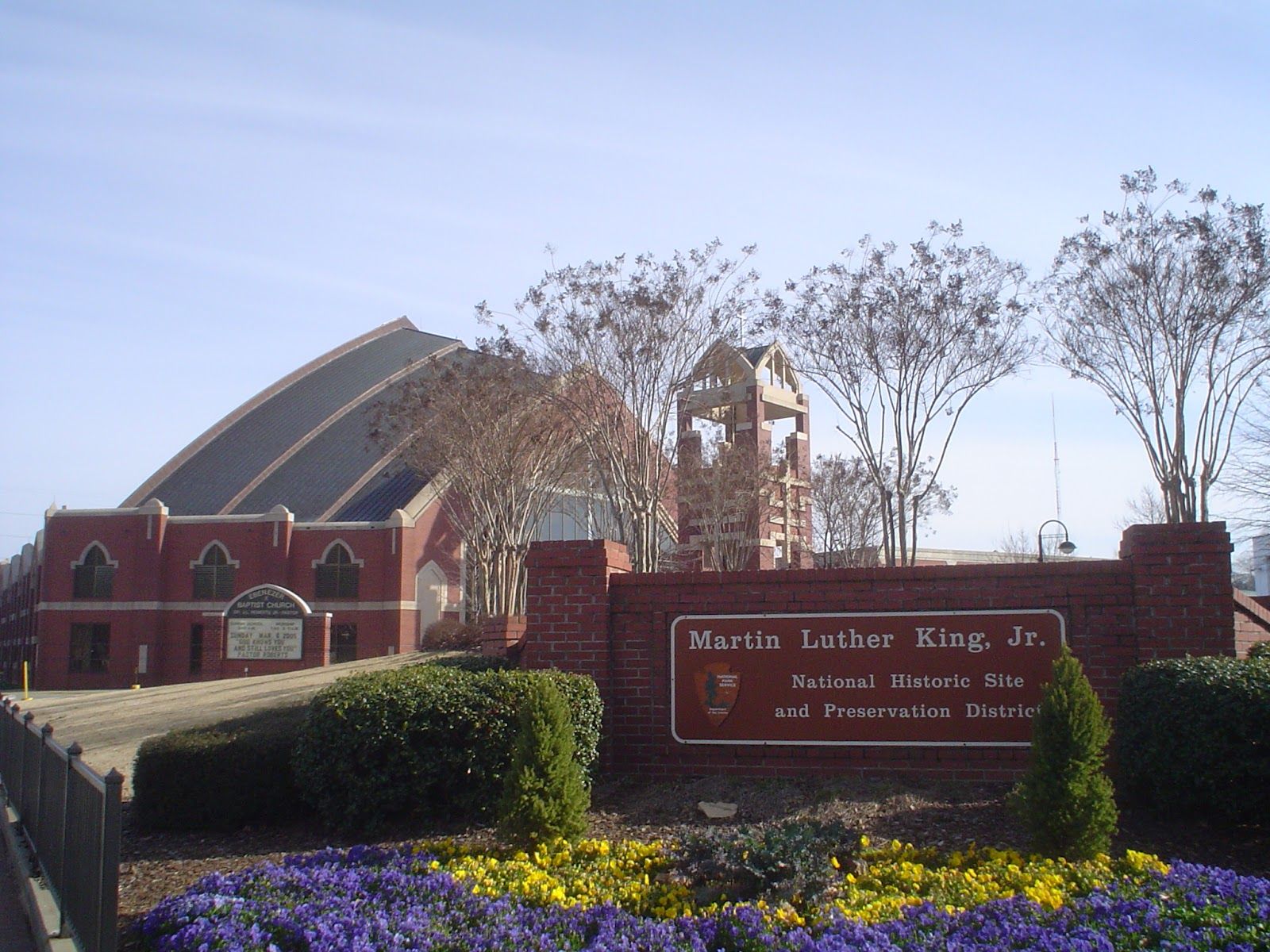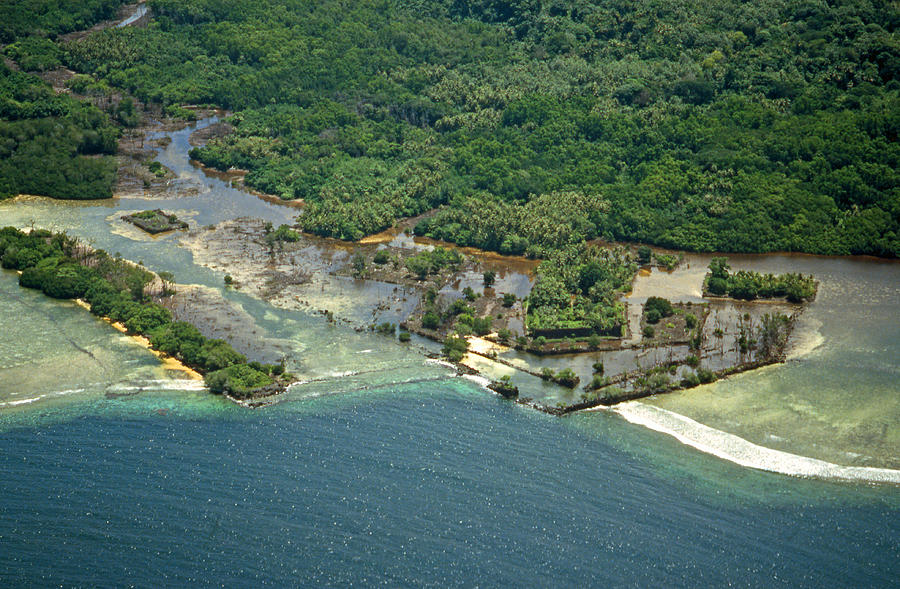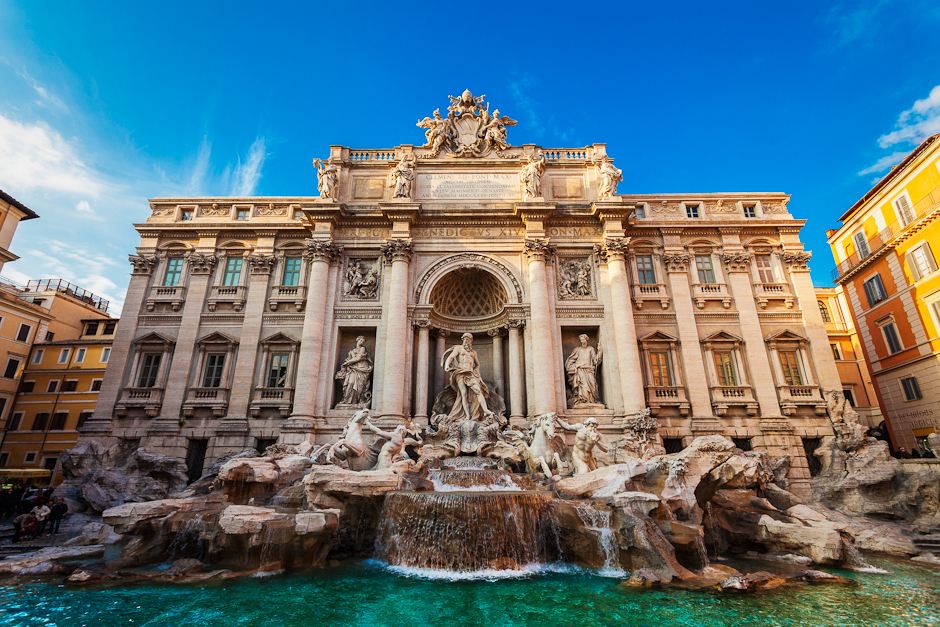Arguably the most magnificent Roman site in Africa, Dougga’s ancient remains – a Unesco World Heritage site since 1997 – are startlingly complete, giving a beguiling glimpse of how well-heeled Romans lived, flitting between bathhouses, the imposing Capitole, a 3500-seat theatre and various temples. The city was built on the site of an ancient Numidian settlement called Thugga, which explains why the streets are so uncharacteristically tangled. The 2nd-century-BC Libyco-Punic Mausoleum is the country’s finest pre-Roman monument.A Roman city with a view, Dougga is set on an enchanting hillside surrounded by olive groves and overlooking fields of grain, with forested hills beyond. Built of yellowish-tan stone, its mellow tones meld harmoniously with the brown, tan and dark-green landscape of the Kalled Valley and the Teboursouk Mountains.
Nestled into the hillside, the outstanding restored theatre, whose 19 tiers could accommodate an audience of 3500, was built in AD 168 by one of the city’s wealthier residents, Marcius Quadratus. The nosebleed seats have spectacular views of the encircling valleys. Today, the theatre serves as a superb setting for listening to North African music during the month-long Dougga Festival, usually held in July or August.
